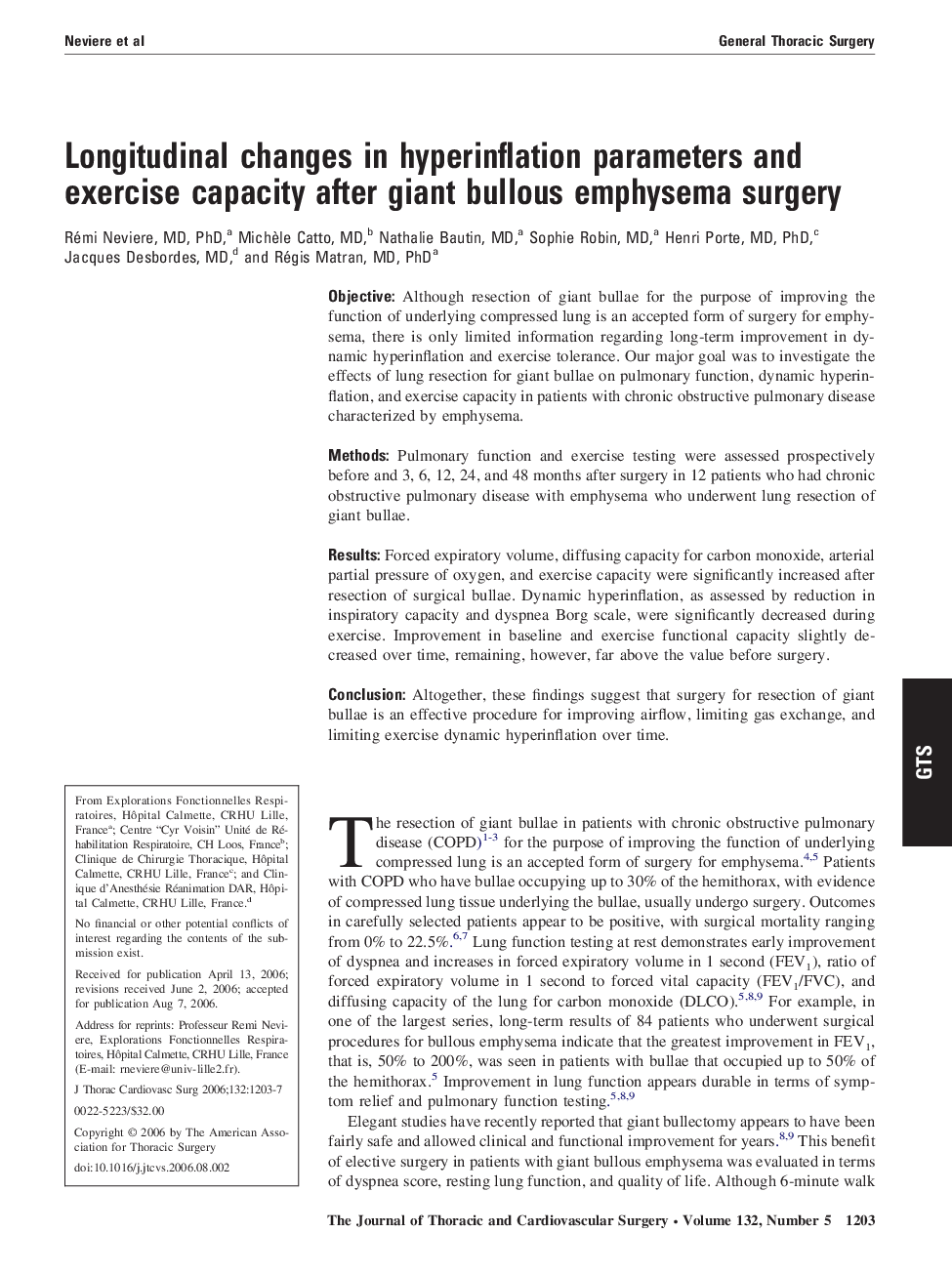| Article ID | Journal | Published Year | Pages | File Type |
|---|---|---|---|---|
| 2986457 | The Journal of Thoracic and Cardiovascular Surgery | 2006 | 5 Pages |
ObjectiveAlthough resection of giant bullae for the purpose of improving the function of underlying compressed lung is an accepted form of surgery for emphysema, there is only limited information regarding long-term improvement in dynamic hyperinflation and exercise tolerance. Our major goal was to investigate the effects of lung resection for giant bullae on pulmonary function, dynamic hyperinflation, and exercise capacity in patients with chronic obstructive pulmonary disease characterized by emphysema.MethodsPulmonary function and exercise testing were assessed prospectively before and 3, 6, 12, 24, and 48 months after surgery in 12 patients who had chronic obstructive pulmonary disease with emphysema who underwent lung resection of giant bullae.ResultsForced expiratory volume, diffusing capacity for carbon monoxide, arterial partial pressure of oxygen, and exercise capacity were significantly increased after resection of surgical bullae. Dynamic hyperinflation, as assessed by reduction in inspiratory capacity and dyspnea Borg scale, were significantly decreased during exercise. Improvement in baseline and exercise functional capacity slightly decreased over time, remaining, however, far above the value before surgery.ConclusionAltogether, these findings suggest that surgery for resection of giant bullae is an effective procedure for improving airflow, limiting gas exchange, and limiting exercise dynamic hyperinflation over time.
